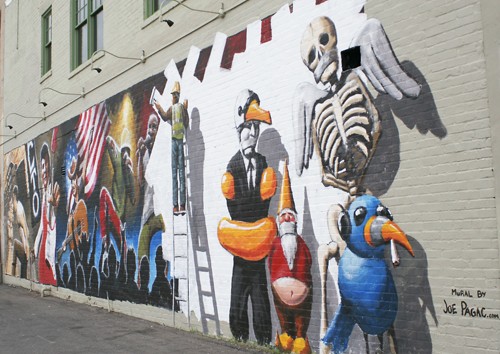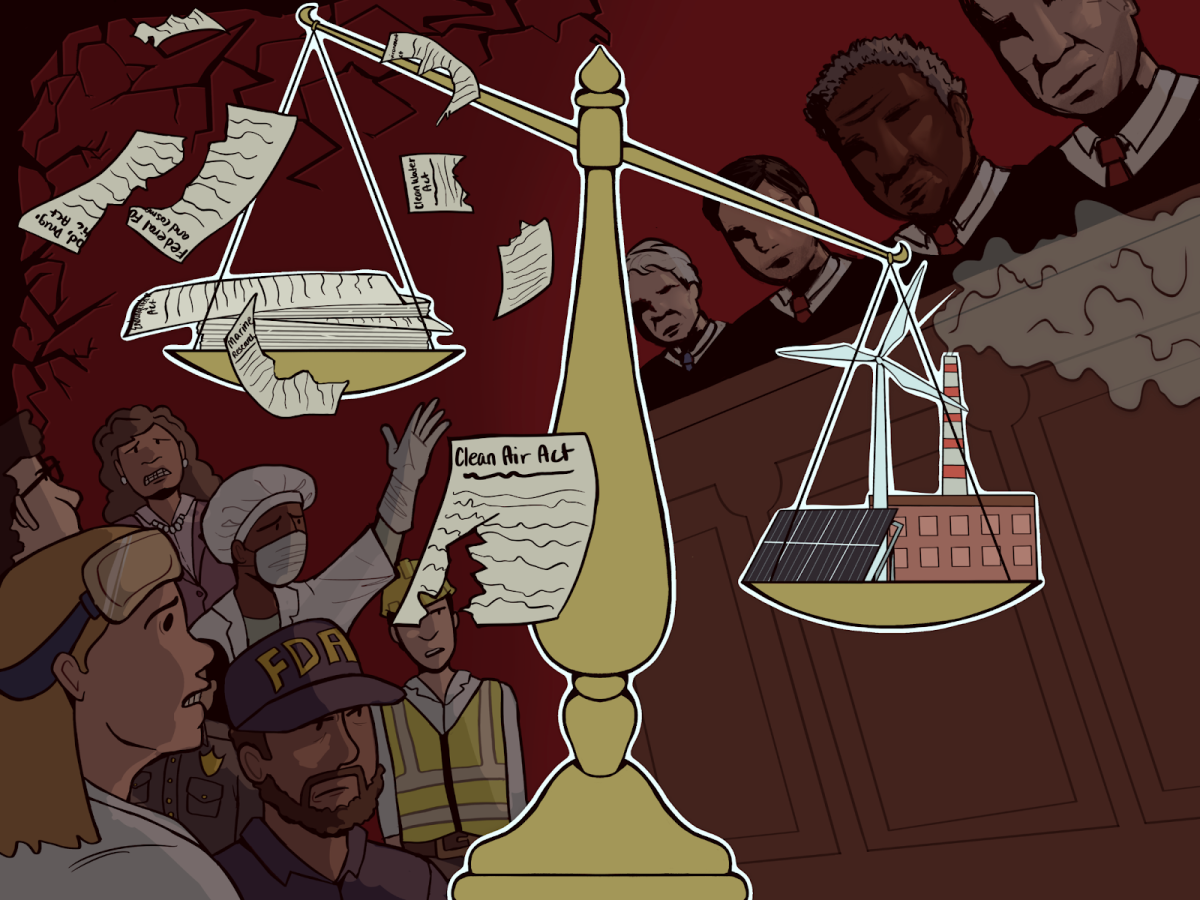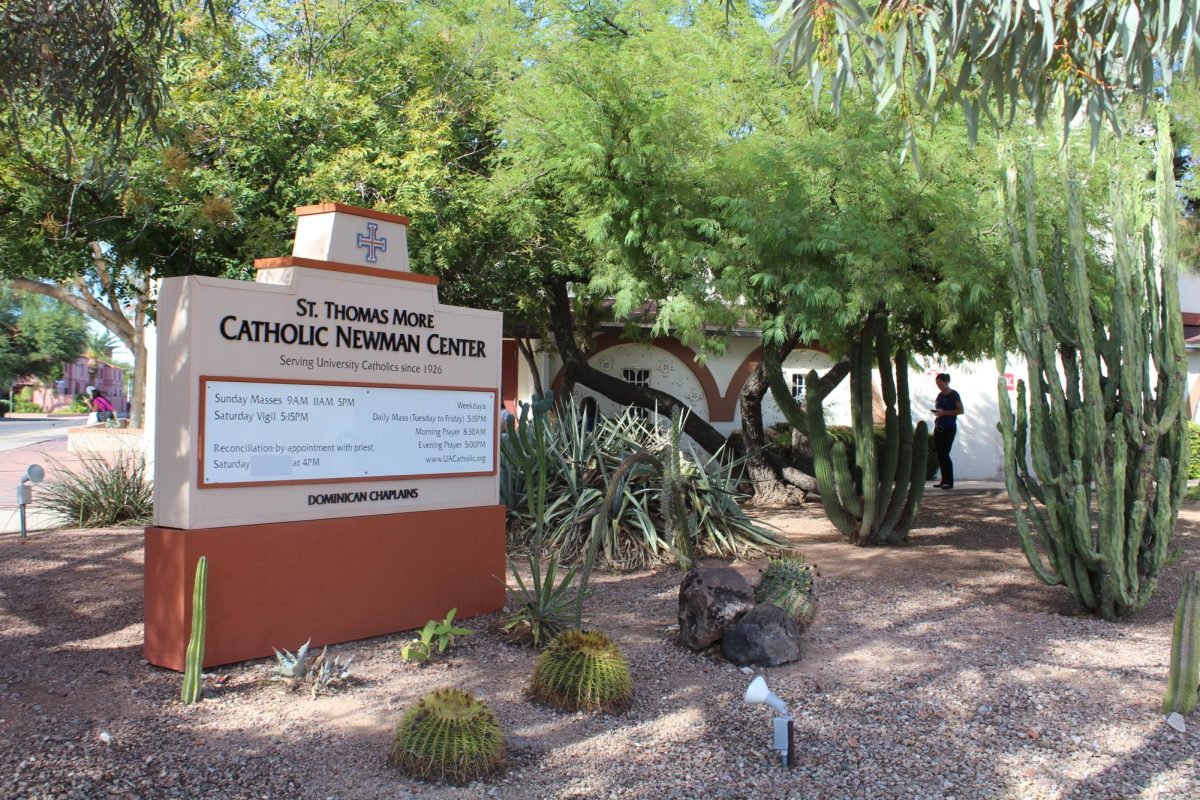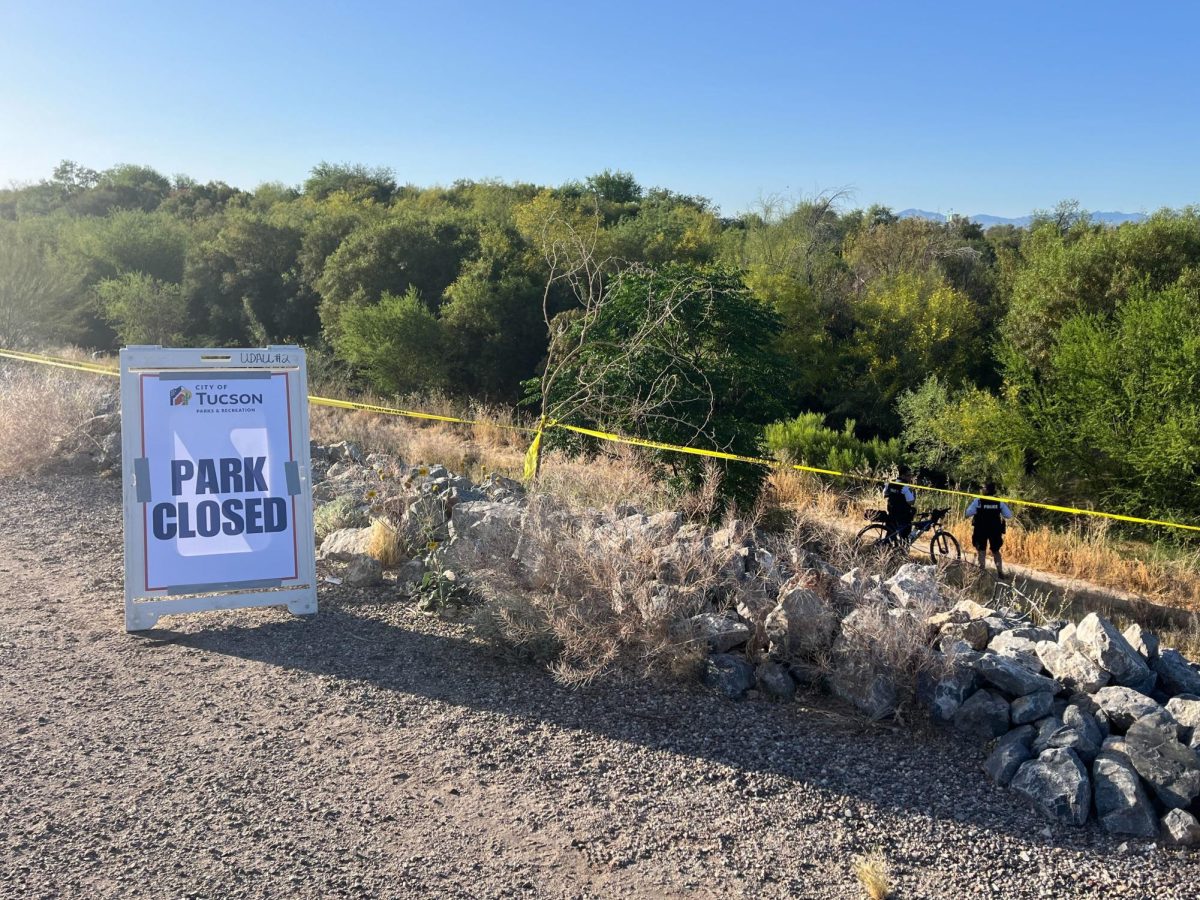Joe Pagac, a heavy-bearded, dark-haired man, slips in iPod headphones, humming songs by Peter Bjorn and John and the Magnetic Zeros. Six gallons of paint, six rollers and dozens of brushes are tucked under his arms. It’s only the beginning.
A 60-by-14-foot wall and eight hours to paint it. Over his music soars the drunken yelps of vagrant men, doling out street corner financial advice, and blatant advances of single women, which leave his girlfriend quite remiss. To some, it would be distracting, to Pagac it’s inspiring.
It’s not an impossible feat; 10 months of art precede this work.
It’s not an impossible feat … but this time it’s his final act.
Because of a complaint filed with the city against the signs, after the mural for the New Pornographers’ July 21 show brought up the subject of pornography between a mother and child, this mural will be Pagac’s last.
“”In America, for whatever reason, we have a ‘get rid of it all and avoid the lawsuit’ mentality,”” said Pagac, a Tucson native, UA visual communication and illustration alumnus and the Rialto Theatre’s muralist. “”This is one example of things getting so boring and the fun getting sucked out of everything.””
The mural is located on the side of the Rialto. Its surface is matted, rocky, expansive and pops vibrantly with blues and reds and yet people pass by it daily, unaware of its story.
Pagac also used to paint a similar mural on the side of the Bookmans on Grant Road and Campbell Avenue.
The Bookmans mural is the one that the complaint addressed.
Dusk has replaced dawn and Pagac’s white tank top and khaki shorts are dotted with sweat and $7-per-gallon Lowe’s house paint. A wall which once was a constant art flux now holds a single image.
The mural is a testament to the Rialto, which Douglas Biggers, the executive director of the Rialto Theatre, calls the “”People’s Theatre.””
From the right, 10-foot high impressions of couples jitterbugging, Elvis strumming, and Springsteen thundering, climb the stucco wall. From the left, images from Pagac’s paintings gone and replaced by bright white, birds and winged skeletons appearing bound and gagged as a city worker is trying to paint it all white, to paint it all away.
“”I wanted something on that wall that … somehow speaks to the fact that we are being censored and that the city is trying to take us down,”” Pagac said.
Today, pushed to the right edge of the wall is a skeleton, adorned with wings, its hands locked behind its back, its mouth covered. Censored.
“”We first hired Joe at the suggestion of Charlie Levy,”” Biggers said in an e-mail. A Phoenix-based concert promoter and owner of Stateside Presents, Levy corralled Pagac into commission-based mural work in Phoenix for First Friday art walks. His first shot in the Old Pueblo was promoting the All Souls Procession’s Calexico concert with a Dia de los Muertos skeletal mural.
“”It was an immediate hit,”” he said.
So, the murals kept coming. Ten months of them.
Today, next to the skeleton sits a blue bird, its hooked yellow beak set under bright and round black eyes. A duct-taped beak acts as a reminder. Censored.
People go to those lengths of shutting things down because they want to protect their children. So many great things get killed because of that mentality,”” Pagac said.
Without the complaint, Pagac, Biggers and several others believed the city would have never cited the businesses at all.
According to the Rialto’s violation notice and Tucson’s stringent sign codes, the citing of specifics such as dates make the artwork legally commercial signs.
“”Here we are, a local business trying to support downtown, and the very people we are trying to help are telling us to stop,”” said Sheila Kressler-Crowley, marketing director for Bookmans.
“”It’s a lose-lose situation.””
Biggers agreed. “”The more important aspect of the murals than marketing was their inherent value as ever-changing public art, constantly adding to the visual vitality of downtown.””
“”It’s important that the Rialto play by the rules,”” Biggers continued. “”But the ability to be innovative, flexible and have some fun should be paramount considerations.””
Today in Pagac’s final image the skeleton is bound. So is the bird. But the city worker is still there, painting away with white. Censored … or rather censoring.
A lose-lose situation spurred the mural which stands today.
“”We intend to seek a variance in the sign code and hope to resume the murals soon … My hope is that the board would agree that the murals are worthy of a variance,”” Biggers said.
Kressler-Crowley explained that when she went to rectify the violation and apply for a permit, the city deemed it a long protracted battle she wasn’t likely to win.
But Biggers intends to continue the fight and Pagac is opening an art collective in the interim. “”There’s the spirit and the letter of the law and, in this case, the letter of the law won,”” Kressler-Crowley said, noting people would need to get imaginative to continue such work in Tucson.
Biggers is hoping that eventually the spirit will prevail. But for now, despite the letter of the law, spirit still stands in Pagac’s mural. The Rialto’s mural. The people’s mural.









